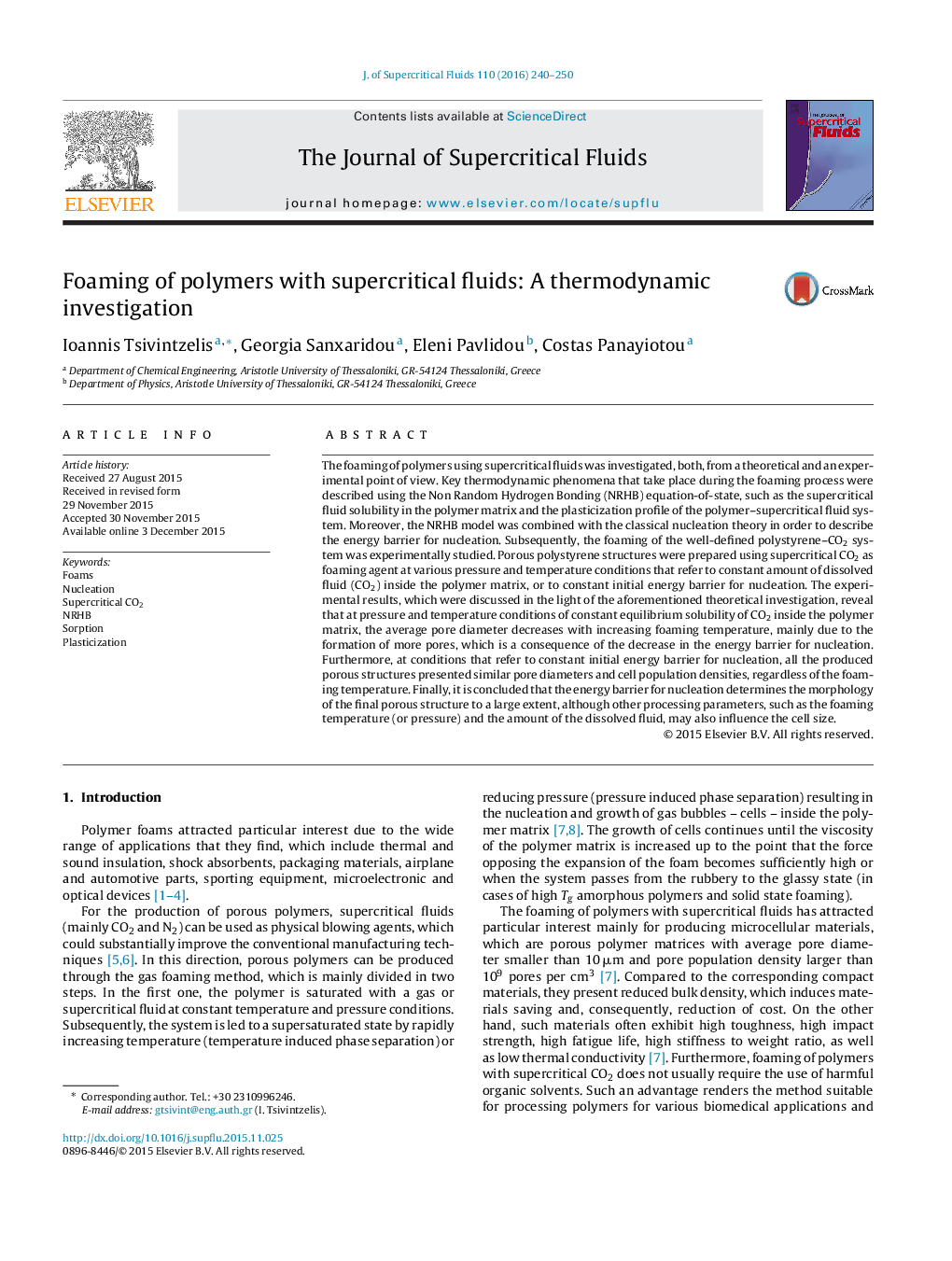| کد مقاله | کد نشریه | سال انتشار | مقاله انگلیسی | نسخه تمام متن |
|---|---|---|---|---|
| 230038 | 1427367 | 2016 | 11 صفحه PDF | دانلود رایگان |
• Foaming of polymers was investigated from a thermodynamic point of view.
• Key thermodynamic phenomena were modeled using the nucleation theory and the NRHB equation-of-state.
• The foaming of the well-defined polystyrene–CO2 system was experimentally studied.
• It is concluded that the energy barrier for nucleation determines the morphology of the final porous structure to a large extent.
The foaming of polymers using supercritical fluids was investigated, both, from a theoretical and an experimental point of view. Key thermodynamic phenomena that take place during the foaming process were described using the Non Random Hydrogen Bonding (NRHB) equation-of-state, such as the supercritical fluid solubility in the polymer matrix and the plasticization profile of the polymer–supercritical fluid system. Moreover, the NRHB model was combined with the classical nucleation theory in order to describe the energy barrier for nucleation. Subsequently, the foaming of the well-defined polystyrene–CO2 system was experimentally studied. Porous polystyrene structures were prepared using supercritical CO2 as foaming agent at various pressure and temperature conditions that refer to constant amount of dissolved fluid (CO2) inside the polymer matrix, or to constant initial energy barrier for nucleation. The experimental results, which were discussed in the light of the aforementioned theoretical investigation, reveal that at pressure and temperature conditions of constant equilibrium solubility of CO2 inside the polymer matrix, the average pore diameter decreases with increasing foaming temperature, mainly due to the formation of more pores, which is a consequence of the decrease in the energy barrier for nucleation. Furthermore, at conditions that refer to constant initial energy barrier for nucleation, all the produced porous structures presented similar pore diameters and cell population densities, regardless of the foaming temperature. Finally, it is concluded that the energy barrier for nucleation determines the morphology of the final porous structure to a large extent, although other processing parameters, such as the foaming temperature (or pressure) and the amount of the dissolved fluid, may also influence the cell size.
Figure optionsDownload as PowerPoint slide
Journal: The Journal of Supercritical Fluids - Volume 110, April 2016, Pages 240–250
